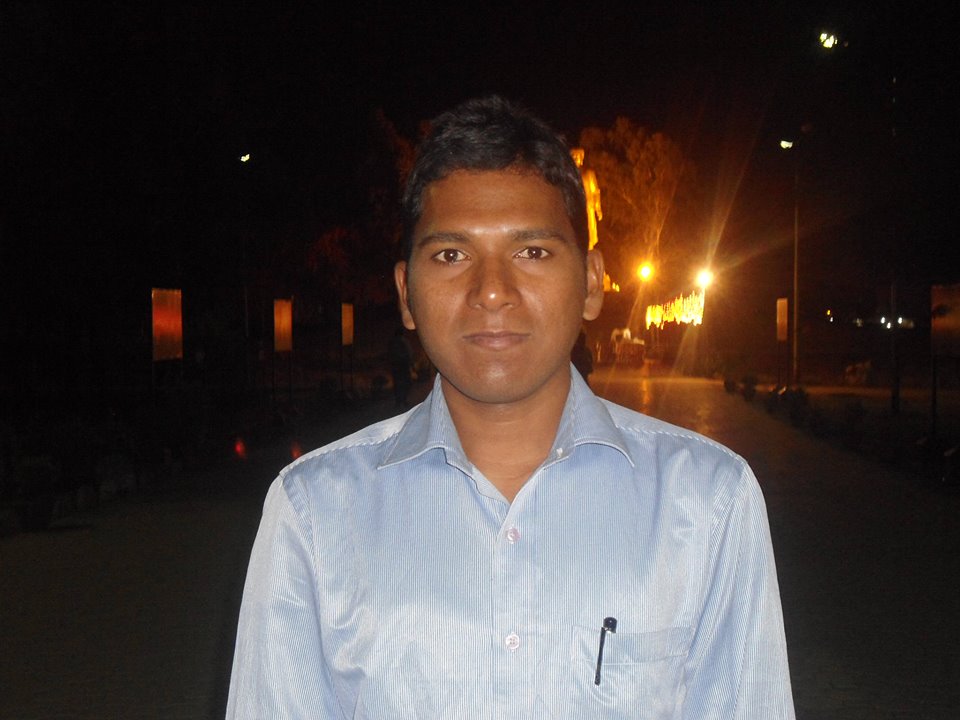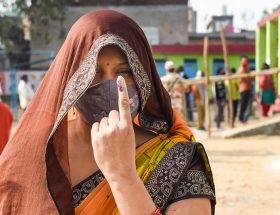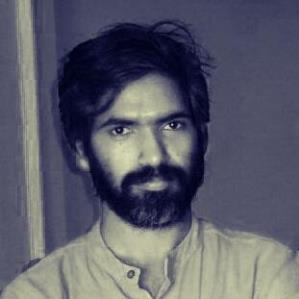Jadumani Mahanand
 This is in continuation to my previous piece on “Only Manuwadi Hindutva gang can burn Indian Constitution”. This short write-up takes a case from South-Western Odisha to explicate Constitution Awareness Campaign programme. Some intellectual activists from SC, ST, OBCs, and religious minority communities – SSA Team (Sambidhan Sachetanata Abhiyan) of Odisha decided to take a national call to launch a Constitutional Awareness Campaigning Programme in order to create a general consciousness about our constitutional rights. One main impetus for this forty-five days long campaign was the incident where Manuwadis burnt the Constitution in Delhi, the capital of the country. There were no national protest or agitation against this anti-national and anti-constitutional act. What this group has managed to do in the time period of more than a month is a milestone in the history of Dalit-Bahujan movement in the State. It is very rare to find such kinds of organized revolutionary activities that take place in Odisha. It is also difficult to observe or find the visibility of Dalit Bahujan movement in the state as compared to Maharashtra, Uttar Pradesh or South India. This short piece argues that there is a start now, experienced and observed by the campaigners. However, Dalit Bahujan activism has been initiated two decades ago, but a rare event like this happening shows the growth of the movement. Let me explain this event to show its extraordinary reach out to the rural as well to urban masses in the ten districts of the State.
This is in continuation to my previous piece on “Only Manuwadi Hindutva gang can burn Indian Constitution”. This short write-up takes a case from South-Western Odisha to explicate Constitution Awareness Campaign programme. Some intellectual activists from SC, ST, OBCs, and religious minority communities – SSA Team (Sambidhan Sachetanata Abhiyan) of Odisha decided to take a national call to launch a Constitutional Awareness Campaigning Programme in order to create a general consciousness about our constitutional rights. One main impetus for this forty-five days long campaign was the incident where Manuwadis burnt the Constitution in Delhi, the capital of the country. There were no national protest or agitation against this anti-national and anti-constitutional act. What this group has managed to do in the time period of more than a month is a milestone in the history of Dalit-Bahujan movement in the State. It is very rare to find such kinds of organized revolutionary activities that take place in Odisha. It is also difficult to observe or find the visibility of Dalit Bahujan movement in the state as compared to Maharashtra, Uttar Pradesh or South India. This short piece argues that there is a start now, experienced and observed by the campaigners. However, Dalit Bahujan activism has been initiated two decades ago, but a rare event like this happening shows the growth of the movement. Let me explain this event to show its extraordinary reach out to the rural as well to urban masses in the ten districts of the State.
We have seen events like Walking for Constitution in Delhi, Maharashtra and Hyderabad. There is also Ambedkar Jalsa in Maharashtra after the 1970s. The Ambedkarites of Maharashtra have celebrated Ambedkar Jayanti, Constitution, Buddhism and there is a huge protest culture which creates critical consciousness among the masses about their constitutional rights. A similar “small and short” initiative has been undertaken by the SSA team. On October 14, in the presence of Krushna Chandra Sagaria (SC) ex-Congress MLA and Kailash Chandra Kulesika Congress MLA (ST) the programme for constitutional awareness campaign started. Prior to that, there was a huge nationwide protest against the Supreme Court judgement on SC/ST (Prevention of Atrocities) Act 1989, in which the Dalits of Odisha also participated in large numbers across various districts and blocks. As a result on April 2nd the ruling BJP Govt. stepped back and reconsidered the provisions of the Atrocities Act. Further, a strong resentment was expressed by the upper castes and some section of OBCs as they protested against the provision of SC/ST (Prevention of Atrocities) Act 1989 in BJP ruled state Madhya Pradesh, and a group of Manuwadis burnt Indian constitution in the national capital Delhi.
 After 9th August, Dalits have protested against the burning of Indian constitution in several parts of Odisha. This protest and agitation does have an impact on the society and state, and it has to continue in different forms and the activists have to realize that the awareness of Indian constitution is very important as far as the Ambedkarite movement is concerned. According to Himansu, a campaigner, the Dalits and Adivasis have some awareness about the SC/ST Prevention of Atrocities Act 1989, but knowledge or awareness about the Constitution pertaining to their rights is completely missing. They know only in a symbolic way that the Constitution was written by Dr. Ambedkar. This is an incomplete answer as far as the objectives of the Ambedkarite movement is concerned. There have been meetings, seminars and cadre camps on Dalit Bahujan ideology, but taking the constitution to ten districts and its blocks is too difficult a task to carry forward. A seminar can be organised, but reaching out to a hundred villages and panchayats to speak about Constitution to common masses shows the strong spirit of radical Dalit activism.
After 9th August, Dalits have protested against the burning of Indian constitution in several parts of Odisha. This protest and agitation does have an impact on the society and state, and it has to continue in different forms and the activists have to realize that the awareness of Indian constitution is very important as far as the Ambedkarite movement is concerned. According to Himansu, a campaigner, the Dalits and Adivasis have some awareness about the SC/ST Prevention of Atrocities Act 1989, but knowledge or awareness about the Constitution pertaining to their rights is completely missing. They know only in a symbolic way that the Constitution was written by Dr. Ambedkar. This is an incomplete answer as far as the objectives of the Ambedkarite movement is concerned. There have been meetings, seminars and cadre camps on Dalit Bahujan ideology, but taking the constitution to ten districts and its blocks is too difficult a task to carry forward. A seminar can be organised, but reaching out to a hundred villages and panchayats to speak about Constitution to common masses shows the strong spirit of radical Dalit activism.
Dhammasen observed that ‘people chant the Bhagavad Gita, Ramayana and Purana in the morning and evening meaninglessly, but Constitution which ensures their rights and secures their life, the people are mistakenly unaware’. He goes on to say that voting rights and constitutional rights are emancipatory rights to poor, Dalits, Adivasi, women and other marginalised communities, if not for the upper caste and class, because upper caste and class have been enjoying the provisions of their caste cultural capital, pride and power, but the common toiling oppressed masses are pushed into the corner. Therefore, we as Ambedkarites felt that awareness on constitutional rights are indispensable to Dalit Bahujan movement in a state like Odisha.
The important vision of Ambedkarite movement is that if the oppressed sections of society are conscious of their constitutional rights, they cannot be cheated by the fraudulent political leader. Therefore, the awareness of the provisions given by Indian Constitution become imperative for common people to safeguard their rights and this is the objective of SSA. Generally, the policies, plans and provisions legislated by the state are not reaching they needy people for whom it is meant. For example, labour law, maternity leave, women’s rights, voting rights, pension card, health care facilities, right to education, BPL ration card, bank loan etc. are essential to common masses and they need to be alert about it. It is to be noted that India is still holding on to some welfare state policies according to 42nd constitutional amendment, which added the words socialist and secularism to the preamble. The common people must be aware of the provisions ensured by the state to make use of them.
Ironically, the state-sponsored school and education are completely controlled by Brahminical forces, because the festivals like Ganesha and Swarasti puja are celebrated in school and colleges, which promote blind belief and faith, but not critical consciousness. The fact is that the secularism in India is Hindu-tainted and appears to be Gandhian in nature. The constitutional rights become secondary, and cultural rights get the primary importance. Therefore, the common masses who are not aware of their rights are fooled by upper caste politics and their votes are apropriated through various means of trickery. A lay poor man of rural village said that during voting time: ‘our family’s votes are “sold out”, we do so because, we never know that this person (the candidate) will meet us ever again, at least we get some money by voting him, which can meet our immediate needs'(stated by a campaigner).
In the seventy years of constitutional democracy in India, the state is controlled by upper caste and class and Brahmanism persists as a determining political force in everyday life of common masses. The campaigner told that if the Constitution has been implemented properly, the situation of India would have been very different nowj and there would not have been problems of rampant caste and gender violence in the society. They further said the Constitution is for everybody who lives in this country. The slogans the campaigner made are “Jai Bhim Jai Constitution”, “Women’s Constitution Jai Constitution”, “Dalit’s Constitution Jai Constitution”, “OBC’s Constitution Jai Constitution”, “Adivasi’s Constitution Jai constitution”, “Minorities’ Constitution Jai Constitution”. According to Himansu, this abhiyan has reached to one lakh people in the state.
The aesthetic of this Sambidhan Jatra is a mode of assertion and celebration. The SSA team is greeted by several Dalit and Adivasi activists of the panchayats, blocks and districts. They are having a four-wheeler to move from one place to other, a microphone, sound system, a big picture in which Babasaheb is presenting the Constitution to Nehru and another picture where Babasaheb is holding the Indian Constitution. The vehicles are having big blue flags on them. There are several people on motorcycles as part of the Jatra with Jai Bhim Blue flags. The people who participated danced during the marches, they celebrated the constitution as more than a sacred book. They used the “Ganda Baja” in their celebration. Interestingly, there are Sambalpuri and Koraputia songs on the Indian Constitution, Dr. Ambedkar and Bahujan-Mulnivasi. The people welcome the Jatra with “Kirtan” with drums, they worship “Constitution as a Sacred Text”. The women welcome with flowers in a bronze plate, they offer flowers and garland to Babasaheb. This is a very rare occasion in the state of Odisha to find after more than two decades of Dalit Bahujan Movement. This is an important part of new culture started in Maharashtra, now reaching to Odisha.
The campaigners speak about of the fundamental rights and the provisions given to them in the Constitution. The awareness programme is first of this kind organized in the state. They have observed that the common people suffer because the ignorance of their constitutional rights. According to them, this kind of awareness programmes must be organized in all parts of the state and country. According to Himansu, they have only reached to a very tiny section of society. It must reach to everybody with the fullest sense of the meaning, so people may exercise their rights with a critical eye, and that is how we can bring about change in society. In his short forty-five day’s campaign felt that it was only Saheb Kanshiram, the hero of post-Ambedkarite movement in India, who had reached to hundreds and thousands of villages, who did not care about food, dress and shelter and that kind of work is needed to build up the movement in Odisha. Another striking observation is that the second and third generation Dalits, who claim to be an more intellectual and educated, have failed to do what Dr. Ambedkar expected from them. This is only a very small step and it will continue next year all over the state of Odisha.
Furthermore, mere reading or understanding Constitution does not fulfill the purpose. Today, the preamble of Indian Constitution is to be found in first page each High School texts books. It is a welcome step to have preface of the Indian constitution, but one must raise some questions. What kind of impact it has on the society? Is there equal treatment among the different communities, caste, gender and religion? The answer is absolutely negative. In this context, reading and understanding through Ambedkar’s prism only brings the real transformation in the society. It will give the insight to understand the fundamental rights and constitutional provisions and evolve a critical emancipatory discourse in the polity and society. This is the prime objective of SSA. Though there are some limitations, but it is a revolutionary step that need to be persisted.
This background invites me to think and raise a critical question – is there a Dalit movement in Odisha? The campaigner observed the people shouting that there is Dalit movement in Odisha, but it is a false notion. After visiting ten districts we come to realize that there is less than five percent Dalit consciousness or people aware about the constitution or Dr. Ambedkar. This is a insight from the ground. I endorse this nuanced observation completely that Odisha is experiencing the first phase of Dalit movement though BSP and BAMCEF have been working for a long time. The initial phase of Kansiram visit to state introduced Babasaheb Ambedkar and fought the election, but that momentum could not be sustained by the activists of Odisha. Furthermore, it is rare to find enough Dalit literature, leaflets/booklets/books on Ambedkar, caste, untouchability, religion and politics from Dalit Bahujan perspectives in Odisha. There are few activists and intellectuals who are putting their efforts to bring out some writings. Abhiram Mallik, Basudev Sunani and few other exceptional examples are there. The socio-political movements are not getting articulated in the existing situation of the state. The articulations of Dalit Bahujan and Adivasi movement come from Maharashtra or Utter Pradesh. It is important to be ideologically sharp and learn from them, but it will remain inadequate unless it is reinterpreted in the socio-political condition of the state.
Moreover, Dalits, Adivasis and Women of the state face rampant caste violence, gender atrocities and displacement. Neither Ambedkarites nor the communists have responded to this situation or built up alternative movements against it. The fact of the matter is that Odisha is entirely dominated by “Jagannath culture”, its civil society is highly conservative, have submissive attitude and SC/ST are patronized by Brahmana-Karana of the ruling class and caste of the state. In this context, Constitution Awareness Campaign is a revolutionary step taken by Ambedkarites (SSA) and it must get support from everyone who believes that liberty, equality, fraternity and justice should prevail in the society.
Ambedkarites have engaged with this long-standing question, why the Constitution is important for Dalit movement? Why Ambedkar and post-Ambedkarite movements uphold the Constitution more than any other social movement or communists or liberals in India? Is it that only Dalits want to have the Constitution? Why are the Dalits more law-abiding masses than anybody else in the country? There is no short answer to these questions. In the history of the Ambedkarite movement in India, the constitution is the cornerstone and it authenticates and supports their struggle. One would argue that the fundamental principles of an Ambedkarite movement is based on the Constitution. The constitution is a ray of hope for them (Dalit, Adivasi, Women, Bahujan and Religious minorities), who are oppressed, excluded, humiliated and discriminated by the Hindutva Brahmanism. The constitution is a living embodiment that meets the aspirations of Dalits, though Dr. Ambedkar has gone beyond the state and the constitution. It is difficult to exercise fundamental human rights in the world of Brahmanism, without constitutional rights. To put it differently, there would not have been the constitution, India would not have existed. Constitution protected India as a country. Long live Indian Constitution! Happy Constitution Day 26 November!
~~~
Jadumani Mahanand is a Ph.D research scholar in JNU.









